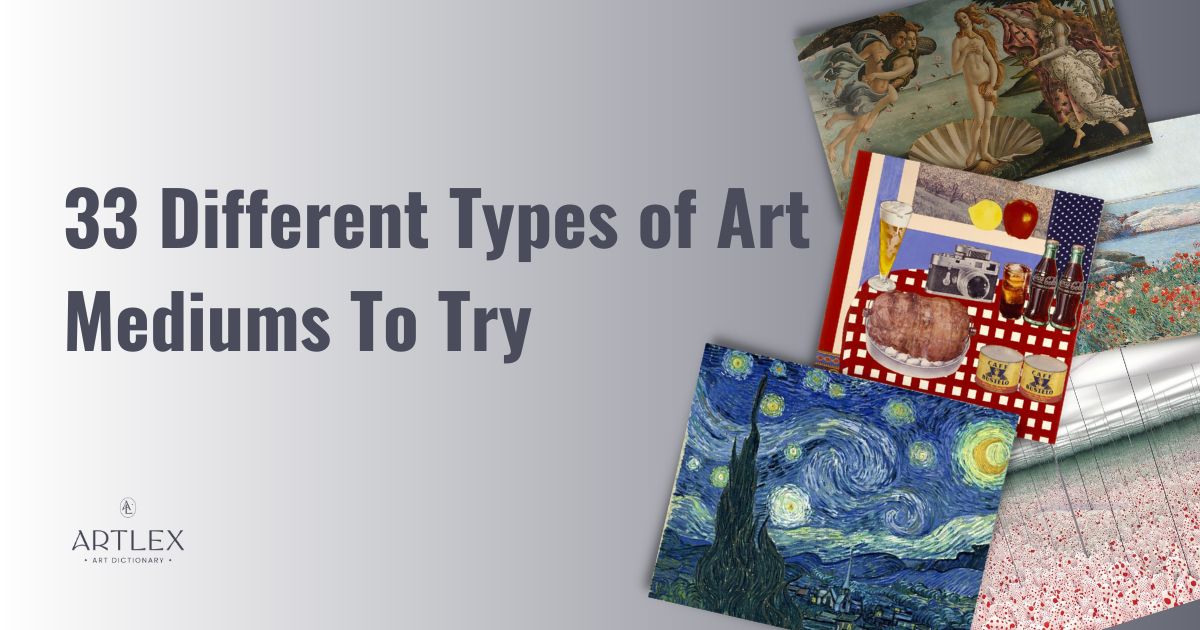
33 Different Types of Art Mediums To Try
An art medium refers to the materials or techniques used to create an art piece. Many art mediums are available, allowing artists and creators to express themselves in hundreds of different ways.
You can also combine many art mediums to create mixed media pieces, such as markers under paint or sculptures containing glass and wood. The medium an artist chooses can be as impactful as the final piece.
- Definition of Art Medium:
- Art mediums refer to materials or techniques used to create an art piece, ranging from traditional forms like drawing and painting to modern options like digital art and mixed media.
- The medium can significantly influence the final artwork and its message.
- Entities/Attributes: Art medium, techniques, materials, creativity.
- Drawing:
- Includes materials like pencils, charcoal, ink, and pastels.
- Techniques such as hatching, stippling, and blending enable a wide range of styles, from surreal to hyperrealistic.
- Entities/Attributes: Charcoal, ink, pencils, hatching.
- Painting:
- Categorized into mediums like watercolor, acrylic, oil, tempera, gouache, and fresco painting.
- Each has unique characteristics:
- Watercolor: Transparent layers, as seen in Dürer’s Young Hare.
- Oil Paint: Rich in color and texture, iconic in works like Starry Night by Van Gogh.
- Fresco: Ancient technique exemplified in Michelangelo’s Sistine Chapel.
- Entities/Attributes: Watercolor, acrylic, oil, fresco, tempera.
- Mixed Media:
- Combines multiple mediums, including collage, assemblage, and installation art.
- Prominent examples:
- Yayoi Kusama’s Infinity Rooms (installation).
- Robert Rauschenberg’s Combine (assemblage).
- Entities/Attributes: Collage, installation, assemblage.
- Sculpture:
- 3D art using materials like clay, stone, metal, wood, and acrylic resin.
- Categories include:
- High Relief and Bas Relief: Carvings on flat surfaces.
- Freestanding Sculptures: Fully 3D pieces like Michelangelo’s David.
- Entities/Attributes: Stone, clay, wood, relief, freestanding.
- Printmaking:
- Involves creating templates or stamps to replicate designs.
- Techniques include screen printing (e.g., Andy Warhol’s Marilyn Monroe) and intaglio (carved mediums filled with ink).
- Entities/Attributes: Screen printing, intaglio, repetition.
- Photography:
- Captures images using cameras and includes categories like:
- Black and White Photography: Focus on light and shadow (e.g., Ansel Adams).
- Landscape Photography: Highlights natural beauty.
- Portrait Photography: Captures human likeness and emotion.
- Entities/Attributes: Black and white, portrait, landscape.
- Captures images using cameras and includes categories like:
- Modern Materials:
- Emerging mediums like acrylic resin and installation art allow for more experimental forms.
- Example: Dan Lam’s acrylic resin sculptures mimic fluidity.
- Entities/Attributes: Acrylic resin, installation art.
- Historical Mediums:
- Ancient techniques such as hot wax painting (encaustic) and egg tempera were used in iconic works like Botticelli’s The Birth of Venus.
- Entities/Attributes: Encaustic, tempera, ancient techniques.
- Significance of Medium Choice:
- An artist’s choice of medium affects the texture, longevity, and emotional resonance of the artwork.
- Example: Yoko Ono’s Apple, where the ephemeral nature of the medium (an actual apple) conveyed impermanence.
- Entities/Attributes: Texture, durability, emotional impact.
Conclusion:
Art mediums form the backbone of artistic expression, ranging from ancient techniques like fresco and tempera to modern innovations like acrylic resin and digital art. The choice of medium not only defines the aesthetics of an artwork but also influences its emotional and conceptual impact. Aspiring artists are encouraged to explore diverse mediums to discover their unique style and artistic voice.
For example, take Yoko Ono’s “Apple”. Apple demonstrates a time when the medium was the most critical part of the artwork. Ono could have chosen an art medium that would last, such as oil paint or sculpture, but she decided to use an apple. This choice of medium transformed the work into ephemeral art, which could not survive.
Whether you’re learning to make art or just curious about different ways artists choose to work, here are 33 different types of art mediums you can explore.
1- Drawing

Pictures, diagrams, and sketches made with anything other than paint are drawings. Drawing includes charcoal, pencils, pens, ink, pastels, crayons, and many others, which makes it one of the most versatile art mediums.
Drawing is one of the oldest art mediums and has likely been around since the dawn of humankind. The oldest known drawn picture is a crayon doodle estimated to be about 73,000 years old.
Since then, techniques have evolved. Artists use hatching, stippling, shading, blending, and many other methods to create art ranging from surreal to hyperrealistic.
2- Pastel
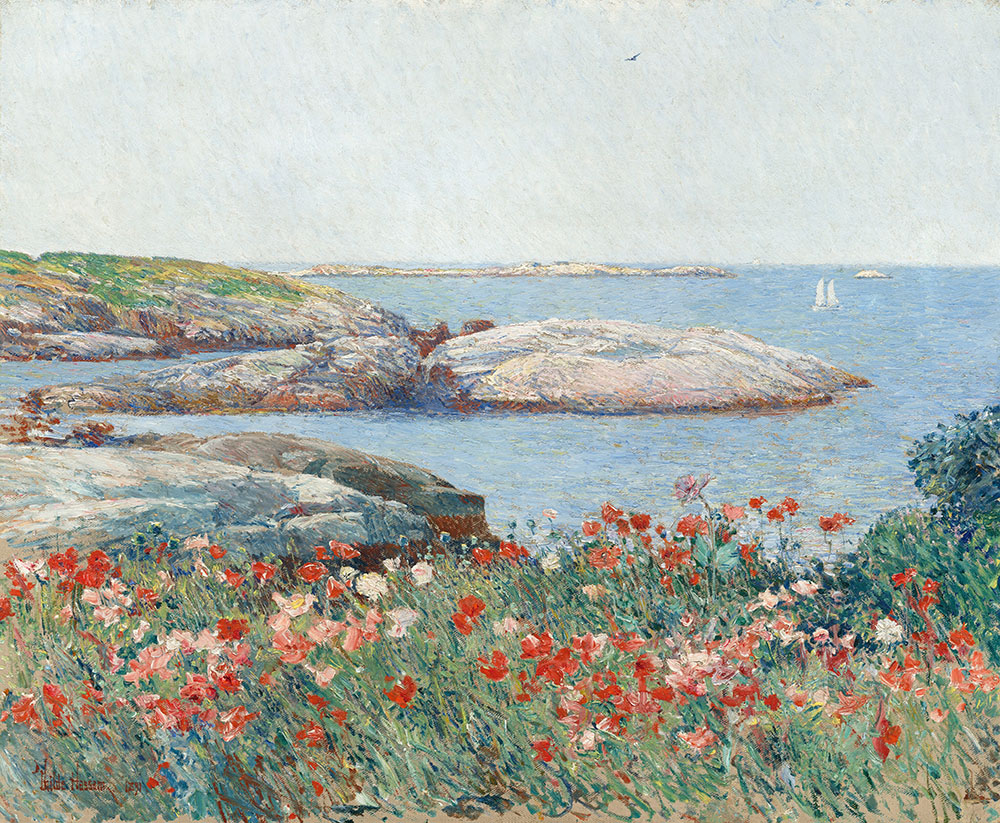
Pastels are a part of the drawing medium. They are made by combining intense pigments with a binder of some kind. This method creates a less-waxy crayon that artists can easily blend to create soft, glowy art with bright colors.
Pastels have been around since about the 16th century. One of the most iconic pastel pieces is Hassam’s “Poppies, Isles of Shoals”, completed in 1891. With its soft lines and vibrant colors, Poppies exemplifies the best of the medium.
There are many sub-categories of pastels, including soft, hard, chalk, and pan-pastels.
Soft Pastels
Soft pastels are the most traditional form of pastel. They are made from highly concentrated pigment and a small amount of gum binder. They are incredibly vibrant and blend easily but are difficult to use for detail work.
Hard Pastels
Hard pastels use the same highly concentrated pigment as soft pastels but with far more gum binder. The extra binder allows you to sharpen them so you can use them for detailed work and outlines. While you can use the points to create fine lines, they are still excellent tools for broad coloring if you use the stick’s side and blend the colors.
Chalk Pastels
Chalk pastels use more binder than any other kind of pastel. This extra binder makes them very easy to use and more difficult to break, but much less blendable. Chalk pastels are often used with students and children to teach pastel art techniques.
Pan Pastels
These pastels are similar to soft pastels, but instead of being crayon shaped, they are placed into small jars. Because they don’t have to be in a stick, they use even less gum binder, which allows for even more vibrant colors and blendability.
Oil Pastels
Oil pastels have slightly more binder than soft pastels, which makes them less crumbly and easier to use. Artists often use oil pastels for quick sketches and impressionist drawings.
3. Graphite Pencil
Out of all the different art mediums, graphite has a remarkable ability to create hyperrealistic art. Graphite is a highly accessible art form for students and beginners because it is an inexpensive drawing medium. All graphite produces shades of gray.
Graphite pencils come in a variety of ‘hardnesses,’ in categories soft black (B), hard black (HB), and hard (H). Within the B category, pencils can range in hardness from 8B to 2B, with 8B being the softest, darkest pencil. Within the H category, pencils range from 2H to 6H, with 6H being the hardest.
Harder graphite pencils deposit less graphite per stroke, leaving a lighter color behind. Conversely, soft pencils leave more graphite with each stroke, leaving near-black dark lines behind.
4. Colored Pencil
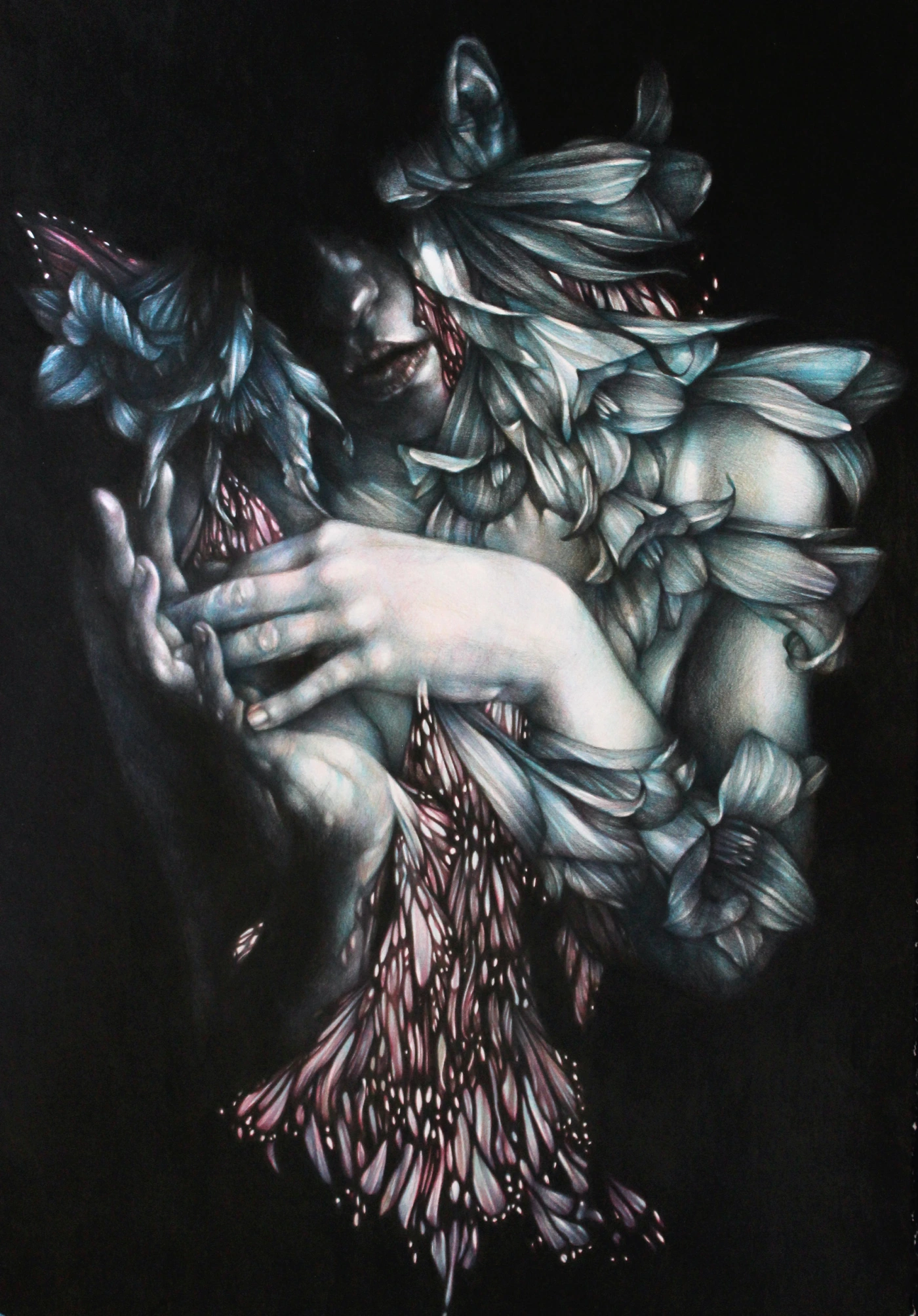
Colored pencils are a recent addition to the drawing art medium. The first colored pencil was an oil pastel pencil invented in 1834. Because of their versatility, cleanliness, and price, colored pencils are popular among children worldwide.
While you can find colored pencils in schools everywhere, professional artists also use them. Nicer colored pencils that contain more and better pigment are a popular medium for many artists that want to draw in color.
The fine tip of the pencil allows artists to create incredibly detailed works in soft, smooth colors. One of the most famous colored pencil artists today is Marco Mazzoni, an Italian artist who draws intense, surreal art featuring faces and hands.
5. Charcoal
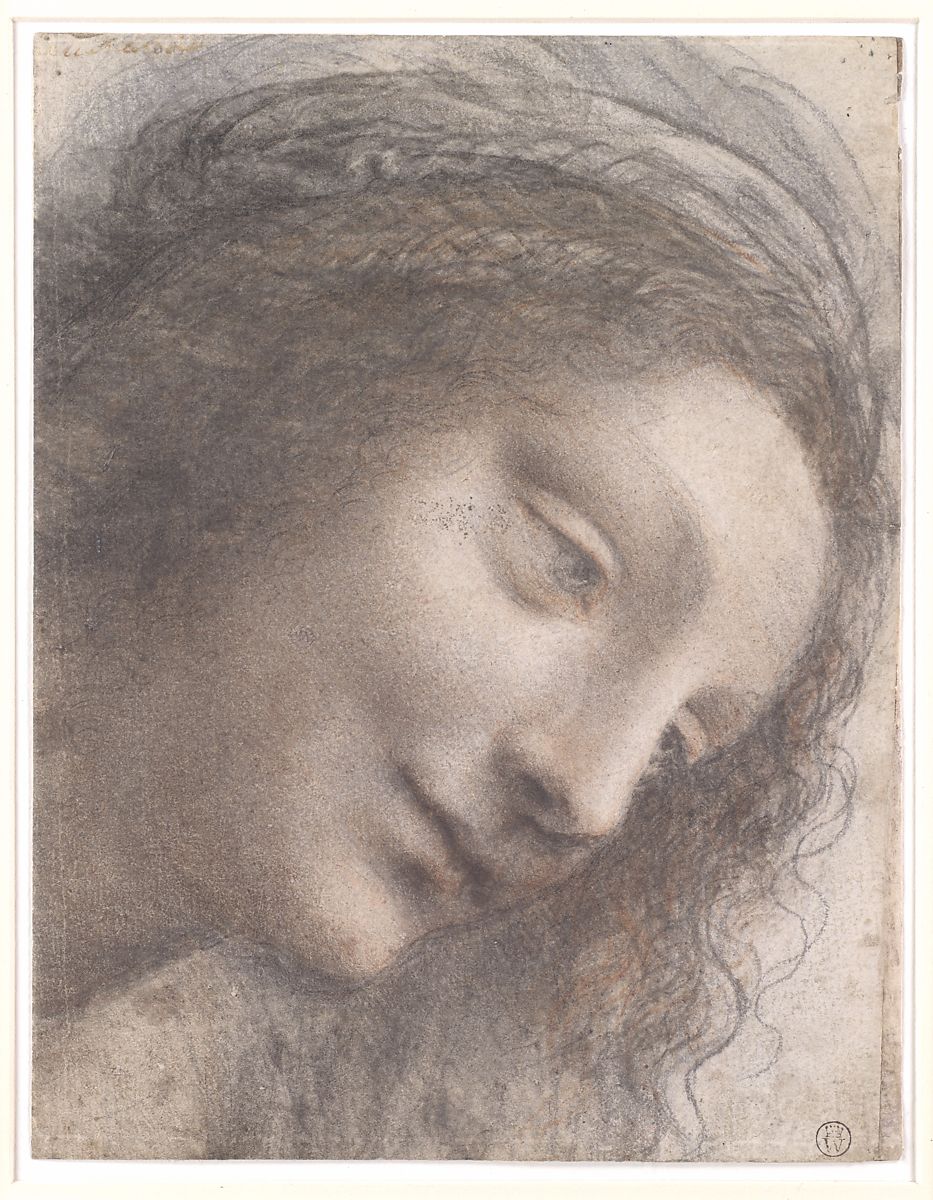
Charcoal is one of the more traditional art mediums available. As a simple drawing tool, it has been found in cave paintings over 25 thousand years old. Charcoal is a quick-to-use art medium, as it leaves strong black lines behind with a gentle touch.
Because of its bendability and depth, artists often use charcoal to create contrasts of light and dark in pieces. For example, da Vinci’s “The Head of The Virgin in Three-Quarter View Facing Right” displays Mary in an almost aetherial warm glow despite being rendered in grayscale.
6. Ink Pen
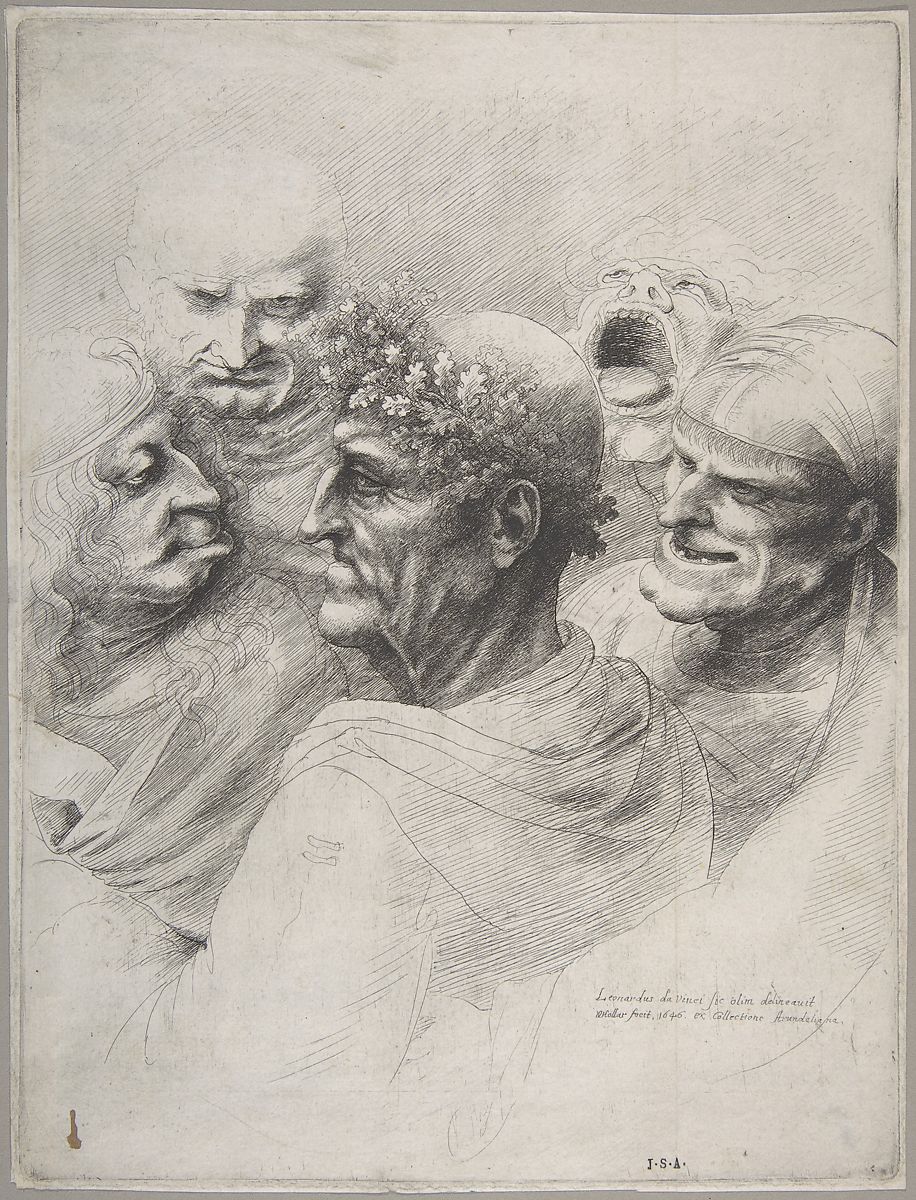
Ink pen is another iconic drawing medium first used in early history. The first recorded use of ink on paper was around 300 BC. While you often used it for writing and recording, da Vinci popularized it as an art medium when he used it to create his iconic pieces, Five Grotesque Heads and Vitruvian Man.
Ink pens can draw thin, precise lines, though they shade poorly. Ballpoint pens have become more popular with modern artists for their accessibility and ability to shade. Hyper Realistic ballpoint pen art has risen in popularity across social media in recent years.
7. Chalk
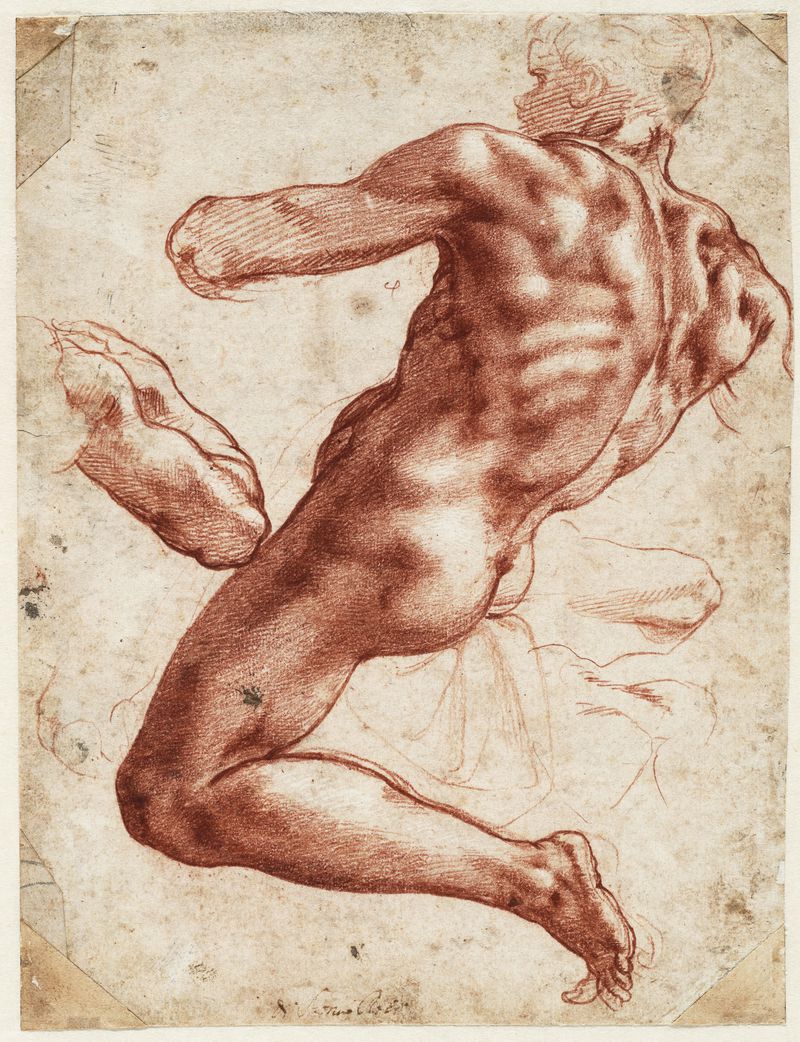
Of all the drawing art mediums, chalk might be the oldest. It has been found in cave paintings around the world. Originally, the only chalk humans had available was limestone broken into chunks and scraped against rocks. Today, many colors and pigments of chalk are available.
Chalk is incredibly versatile, as you can use it to fill space and sharpen to draw lines. For example, Michelangelo wetted red chalk and used varying pressures to create depth. He represented this technique well in his piece “Seated Male Nude; Separate Study Of His Right Arm”, which shows blending, highlights and depths, and flat lines, all created with red chalk.
8. Painting
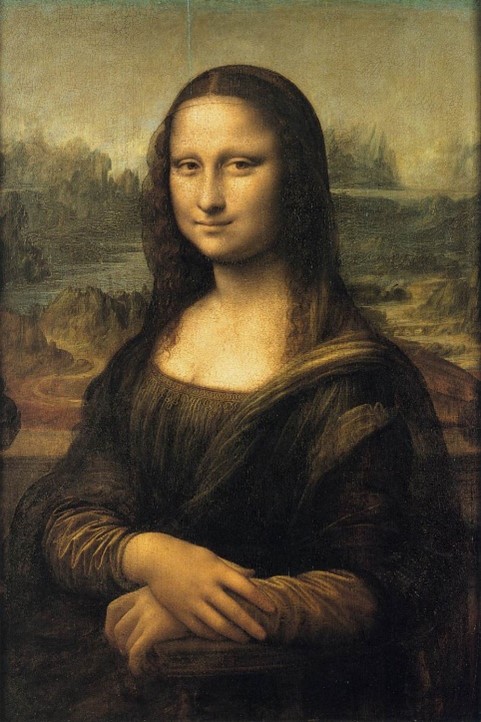
Many types of art mediums fall under the label of paint. The primary difference between drawing and painting is that paint has to dry. The art medium is considered a kind of paint if it needs to dry after being placed on a page. Although, mediums like ink blur this line.
Painting is an ancient art medium. The estimated earliest use of paint was about 100,000 years ago. Early humans used many materials to make paint, including plants, bones, and rocks. Today, paints have evolved to include acrylic paints, oil paints, watercolors, and many others.
9. Watercolor Painting
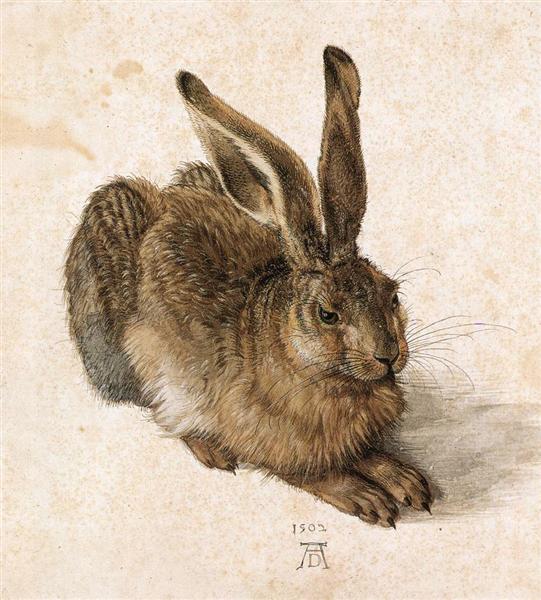
Watercolor paint is made when a pigment is ground up and mixed with a gum binding. The artist will combine this with varying amounts of water to create different effects. Works done in this art medium can be soft and muted when mixed with lots of water or bright and vibrant if mixed with less water.
Watercolor is one of the oldest painting mediums. Historians estimate that watercolors have been used since at least 4,000 BC. While many think of watercolor as consisting of broad, undetailed swaths of color, it is a fine art medium that you can use to do intricate work.
One of the most famous watercolor paintings is Young Hare by Dürer (1502). In this piece, Dürer painstakingly painted individual hairs in a young hare’s coat, capturing the texture of the soft fur in a challenging medium.
10. Acrylic Paint
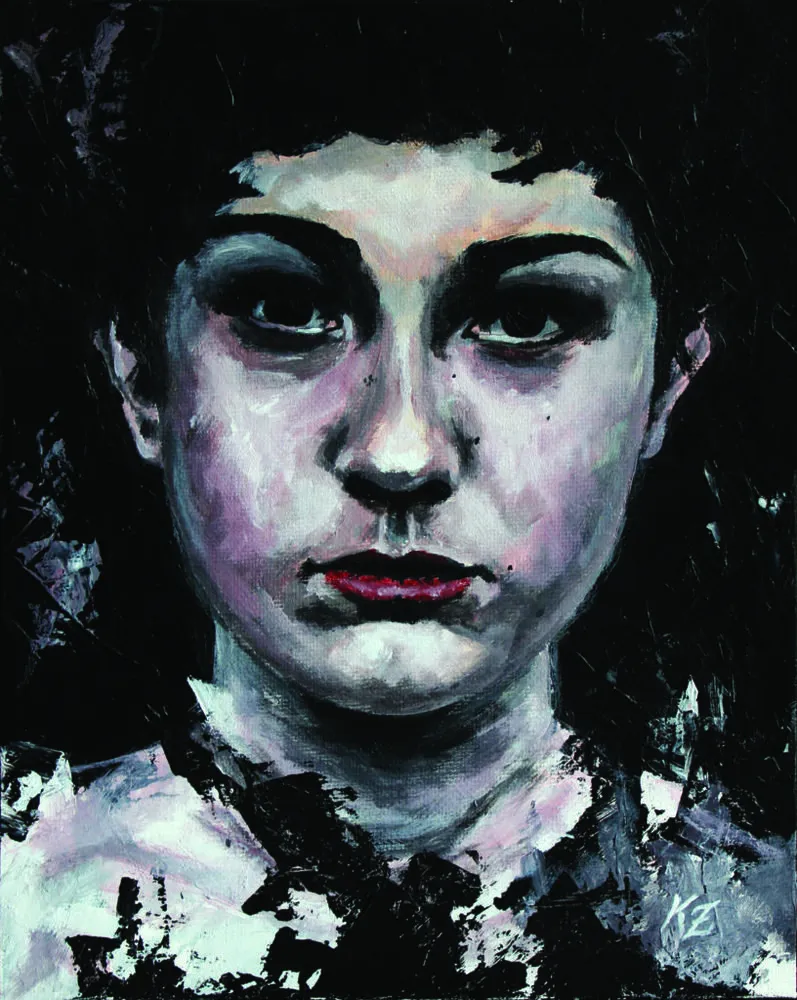
Acrylic paint is a newer addition to the list of painting mediums. The first acrylic painting was completed in the 1950s. Unlike older art mediums, acrylic paint relies on synthetic resin to bind. Acrylic paint can produce incredibly vibrant and colorful pieces because it doesn’t need to be diluted in water to be used.
Because of its unique properties, some modern artists have developed all-new painting techniques with acrylic. For example, Adrienne Judge has gained recent fame for her ‘paint sculptures,’ where she pipes acrylic paints into beautiful 3D flower displays. Other artists intentionally lifted paint off finished pieces to create white space.
11. Oil Painting
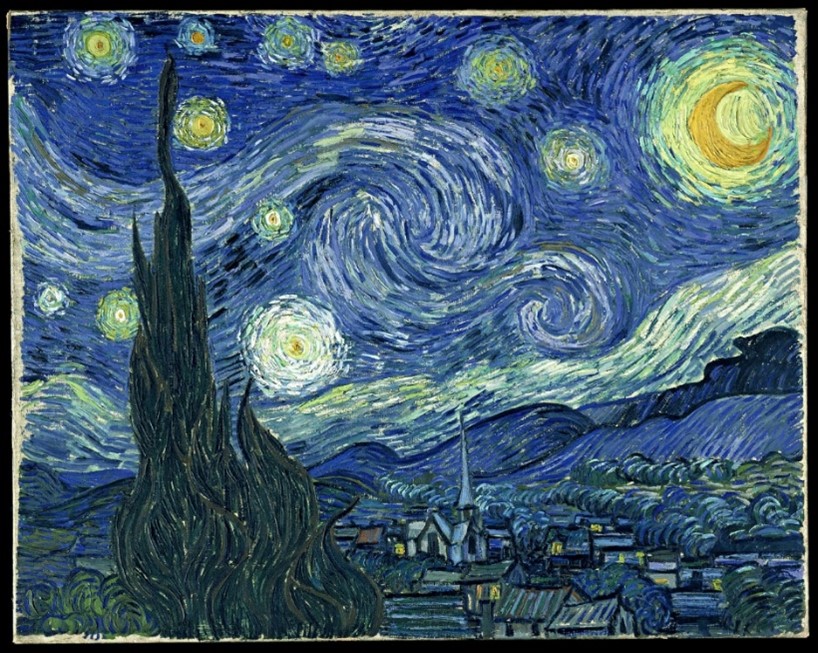
Oil painting is a traditional artistic medium that artists first used as early as the 7th century. It is made by mixing ground pigments with linseed oil and varnish to create a smooth, stiff paste. The linseed oil slows the drying of the paint, giving the artist time to work.
Oil paint may have the most famous works of all the art mediums artists have ever used. American Gothic by Grant Wood, The Starry Night by Van Gough, Mona Lisa by da Vinci, and most of Monet’s pieces are all oil paintings.
There is no art medium more versatile or iconic than oil paint. Depending on the artist, oil paints can make soft and muted colors, bright and vibrant scenes, broad impressionist interpretations, and finely detailed recreations.
12. Egg Tempera Paint
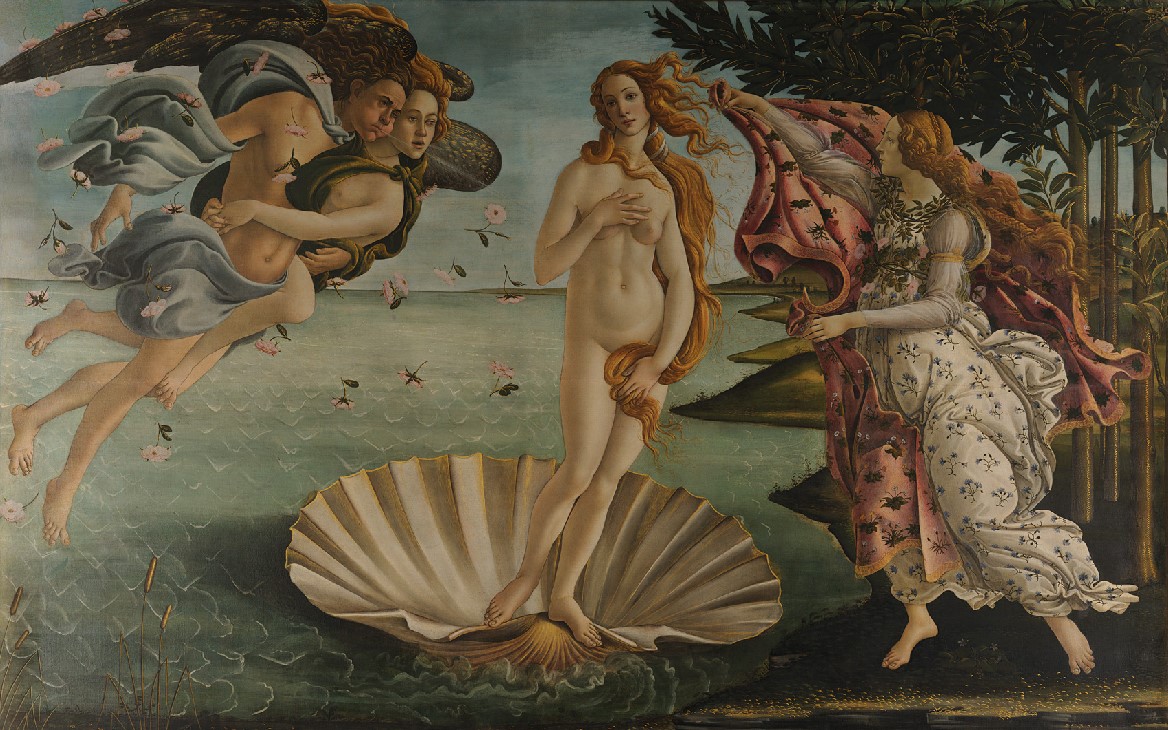
Egg Tempera Paint is an old art medium with uses dating back to ancient Egypt. This painting medium uses eggs as a binder. Egg yolk is typically mixed with pigments and linseed oil to make a paint that dries quickly.
Before the widespread use of oil paints, egg tempera paint was one of the most widely used art mediums. For example, Botticelli’s The Birth of Venus and da Vinci’s The Last Supper are tempera paintings.
13. Gouache
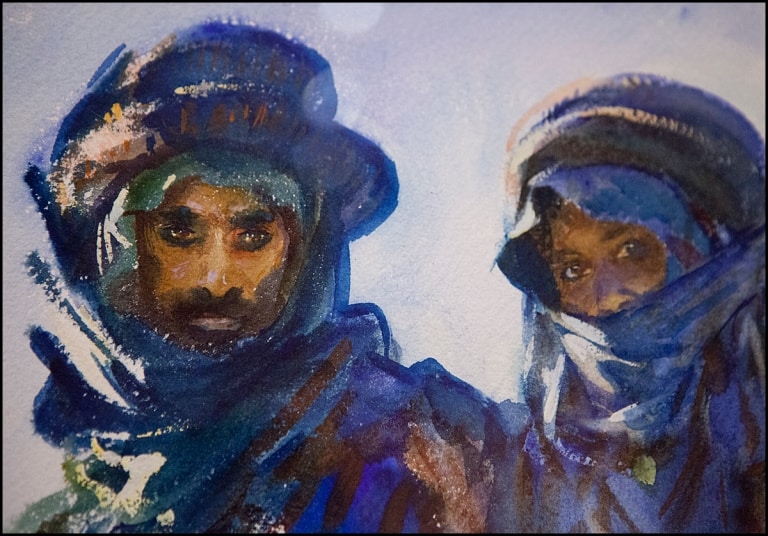
Gouache paint is used similarly to watercolor paint. It is contained in small, highly pigmented containers that the artist dilutes for different purposes. However, while watercolor often loses much of its vibrancy when the artist adds water, Gouache remains bright and colorful despite dilution.
One of the most famous people in the art world to use Gouache is Pablo Picasso; several of his renowned portrait paintings used Gouache as their medium.
14. Hot Wax Painting (Encaustic Painting)
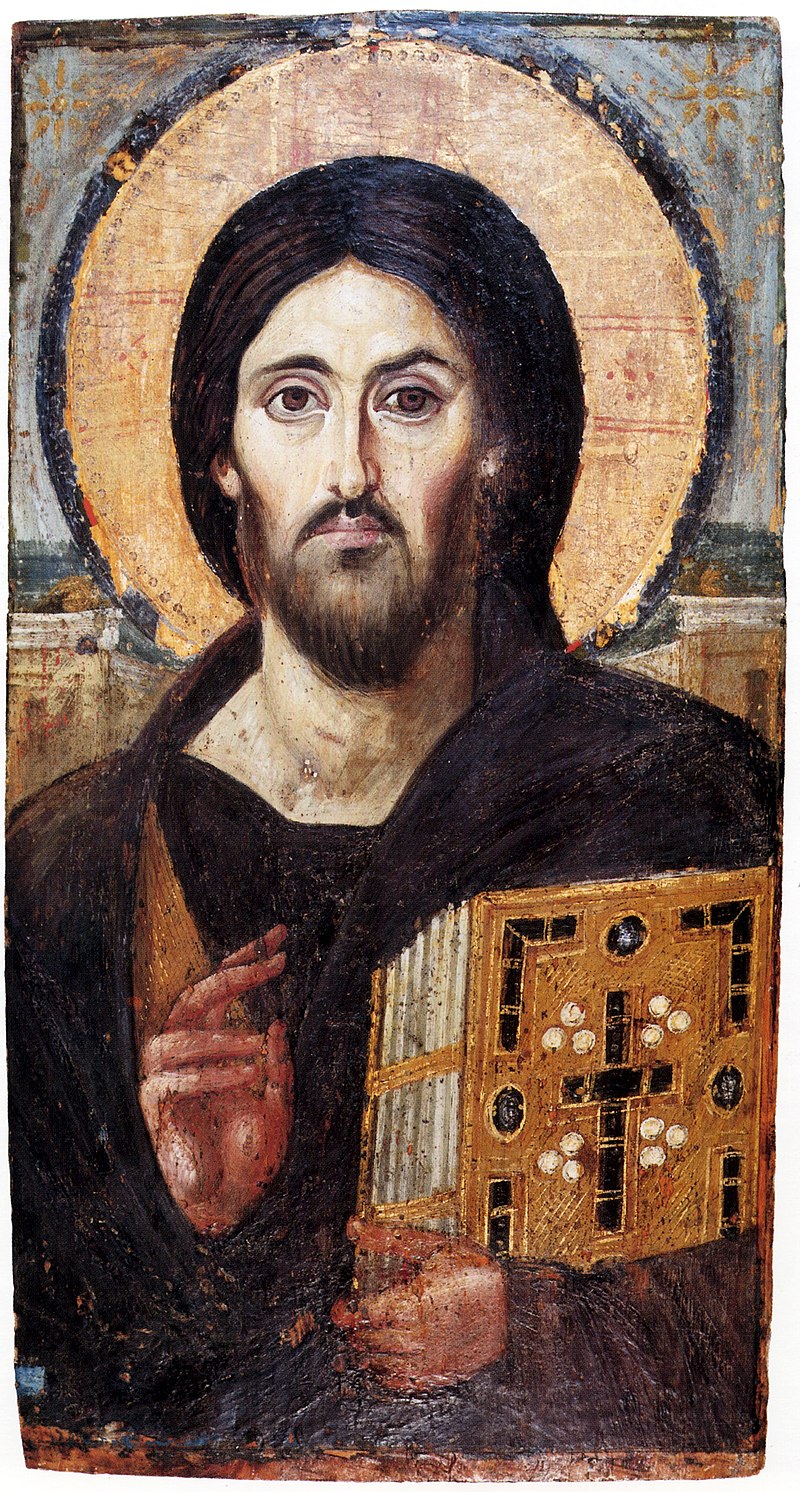
Hot wax paintings are known in the art world as encaustic paintings. Encaustic painting is a unique art medium that uses layers of hot, pigmented wax on wood panels. Many artists that use this medium also carve into their pieces to create depth and sharper lines. Due to the nature of wax, most encaustic paintings have a soft glow.
The first hot wax paintings were likely made in the 5th century, making encaustic paint one of the oldest art mediums on this list.
See full guide on Encaustic Painting.
15. Fresco Painting
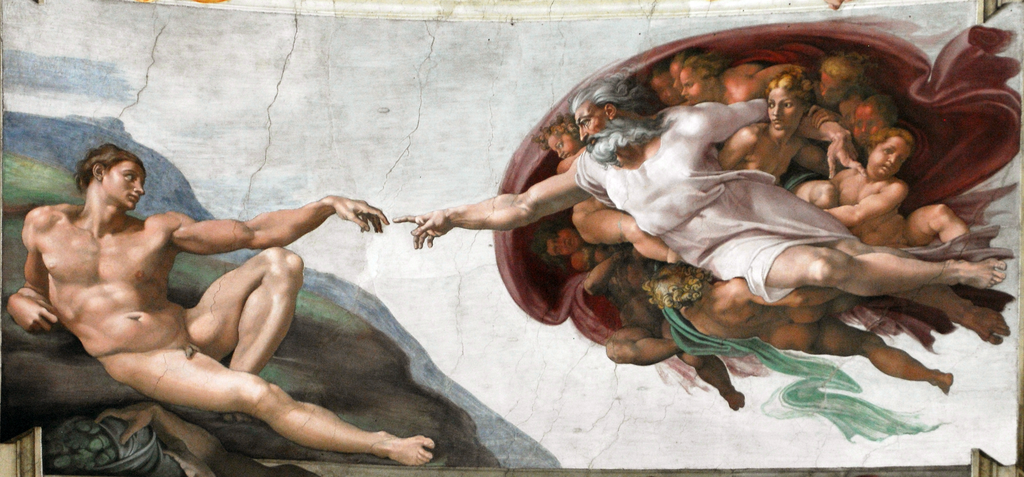
https://www.museivaticani.va/content/museivaticani/en/collezioni/musei/cappella-sistina/volta/storie-centrali/creazione-di-adamo.html
Fresco painting is an artistic medium that uses water-based paints on fresh plaster. This kind of painting is usually done on walls and, on some occasions, ceilings. Fresco painting is among the older art mediums, as it was invented around 2000 BC.
The Sistine Chapel ceiling is likely the world’s most famous fresco painting. It took Michelangelo four years to paint, standing on a handmade scaffold and craning his neck to work.
16. Mixed Media

Mixed media art encompasses a wide array of art mediums. Whenever an artist uses two or more mediums in art, the piece is considered mixed media art.
The most common mixed media art forms are collage, assemblage, sculpture, installation, wet-and-dry media, and altered book art.
17. Collage
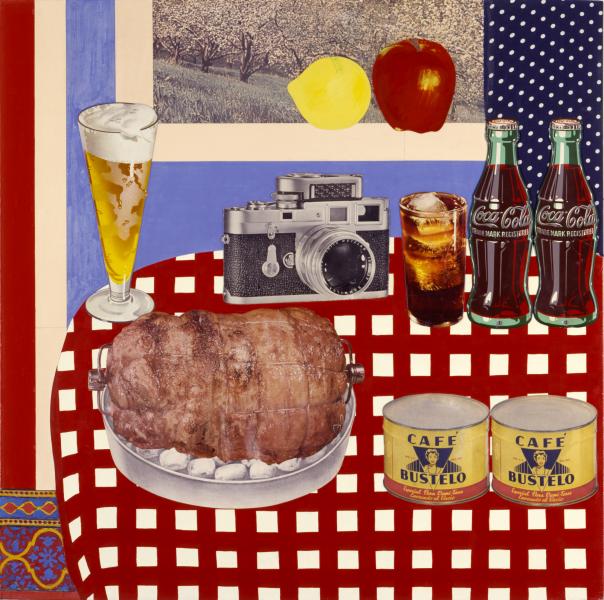
Collaging is a unique art medium consisting of scraps of paper from other artworks, magazines, books, and newspapers to overlay them and create something new.
Many artists that use collage have steered clear of using words, such as Man Ray’s A Paradigm for Performance. Hannah Hoch is credited as the creator of photomontages, a category of collage that focuses on photos.
See our full guide on Collage.
18. Installation Art
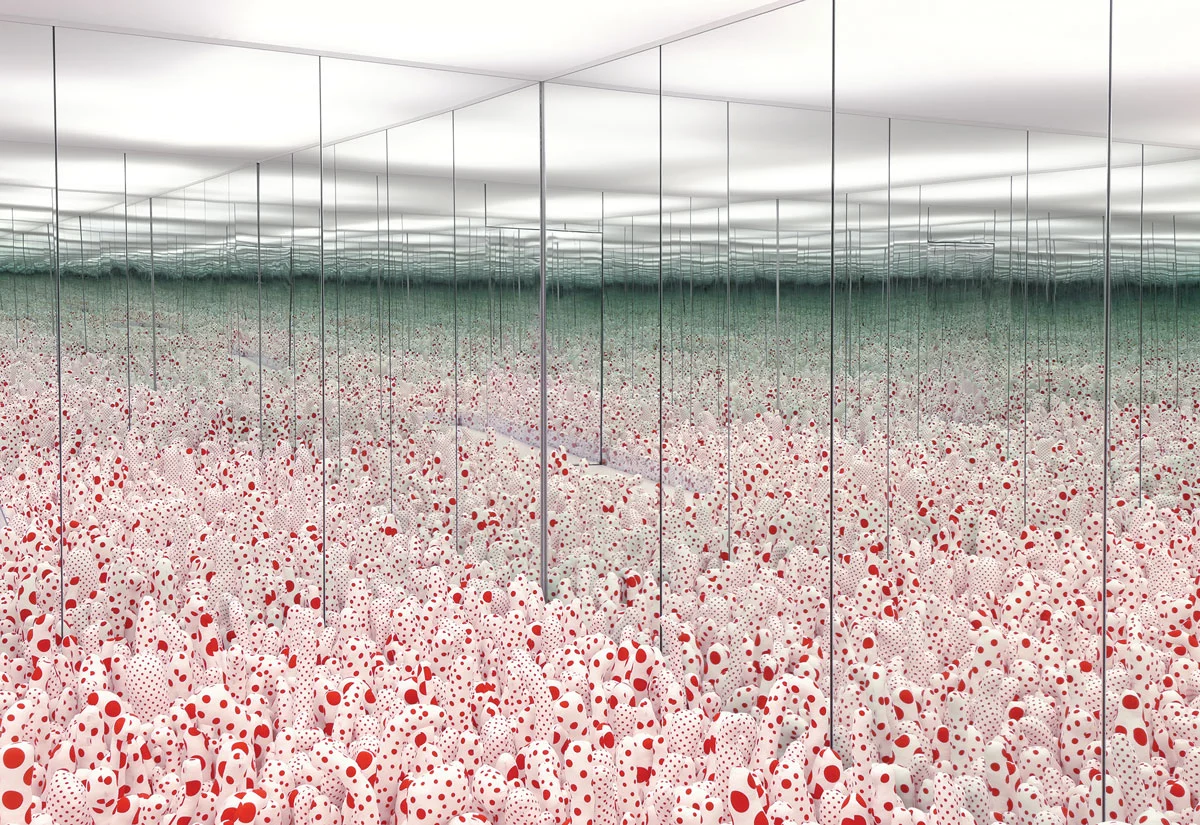
Installation art is a newer artistic medium that started in the 1900s, though it did not gain popularity until the 60s. Installation artworks seek to create an experience for the viewer and can take up whole rooms or sections of museums.
One of the most iconic installation artists in recent times is Yayoi Kusama, in her series “Infinity Rooms”. Kusama creates the illusion of infinite space filled with lights, colors, and shapes in these pieces. The mirror rooms immerse the viewer in Kusama’s art and the worlds she creates.
Installation arts can also often have a performative aspect to them. Sun Yuan and Peng Yu’s “Can’t Help Myself” was an installation piece in the Guggenheim. In the piece, a robot with an arm and squeegee attempted to clean up the mess of ink around it. In the process, it would fling ink and debris around the room, destroying its progress.
Can’t Help Myself is an installation piece that incorporates movement and performance and is better off for it. Instead of a still of a person or robot inadvertently ruining their work, viewers can see the devastation happen in person, in real-time.
19. Assemblage
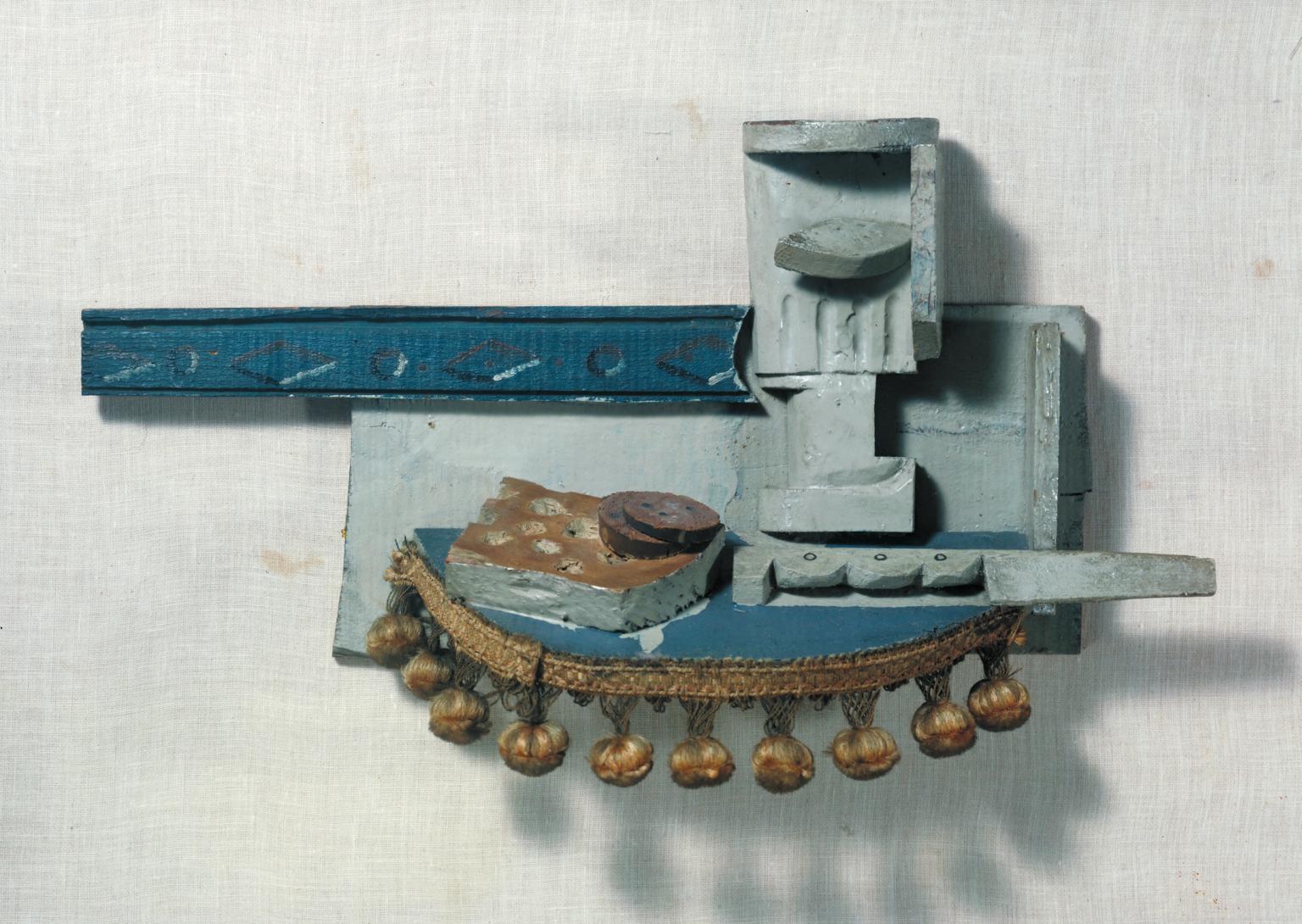
Assemblage is a unique mixed-media art form that is difficult to define. Assemblage art is mixed media components used to create sculptures, three-dimensional art, or installations. It may best be described as a three-dimensional collage.
Assemblage is a modern art form that gained popularity in the 50s and 60s. Among the most notable assemblage artists is Robert Rauschenberg. Rauschenberg used collections of scrap objects to create three-dimensional artworks. At the time, Rauschenberg called this artmaking “Combine,” but today, we know it as an assemblage.
See full guide on Assemblage.
20. Printmaking
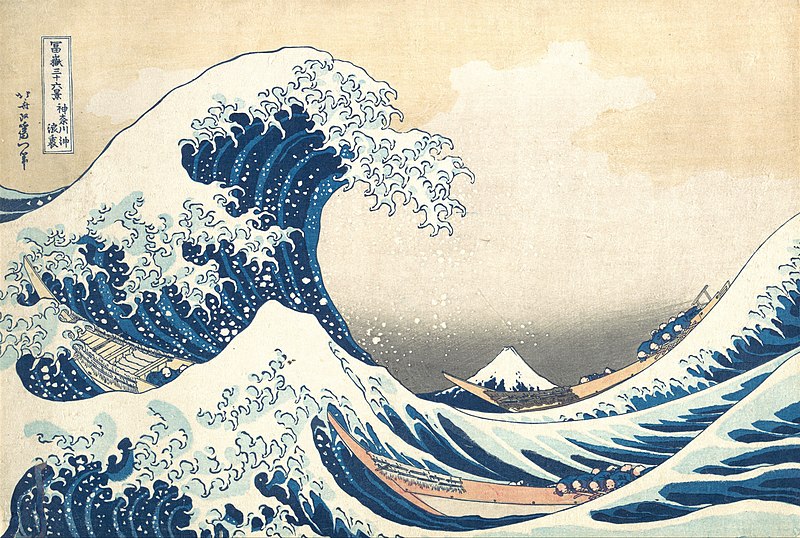
Of all the different art mediums, nothing lends itself to repetition as printmaking does. Printmaking involves making a template, usually a stamp, that printmakers can transfer onto another page. Because an artist can use a stamp repeatedly to create the same piece, printmaking was a vital art form before scanners, and high-quality printers were common.
“Under the Wave off Kanagawa” by Katsushika Hokusai might be the most famous printmaking artwork in the world. It’s estimated that the original carving made about 1,000 copies of The Wave.
Many different art mediums fit under the printmaking category, including screen printing and intaglio.
21. Screen Printing
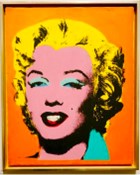
Screen printing is a type of printmaking, though the process is more complex. In screen printing, the artist creates a pattern on a screen. They then place the screen over another medium, usually a canvas or piece of fabric.
The artist will then take ink and press it through the screen, leaving the pattern behind on the medium under the screen. Most screen printing artists use a few screens with slight design variations to create a multi-colored piece of art.
Andy Warhol‘s Marilyn Monroe exemplifies the unique parts of screen printing. He created many different final pieces of Marilyn Monroe from the same screens, all with different colors, creating a vibrant series of pop art pieces that remain famous today.
See full guide on Screen Printing.
22. Intaglio
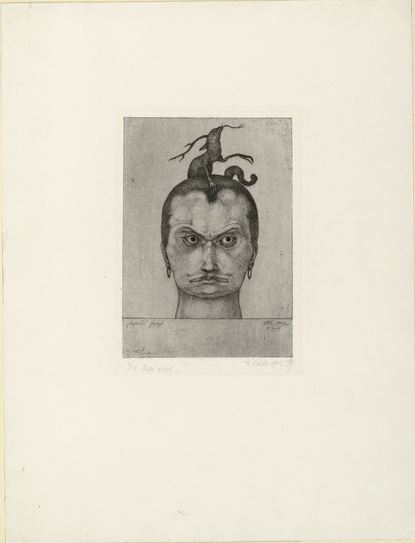
Intaglio is another artistic medium that falls under the category of printmaking. Intaglio describes an artistic process where the artist carves into a medium such as wood. They will then fill the etching with ink and let it dry, creating a single artwork.
Many artists have experimented with intaglio, including Pablo Picasso. Unlike other printmaking mediums, intaglio is not repeatedly printable, which makes it more similar to other single-make art mediums.
23. Sculpture
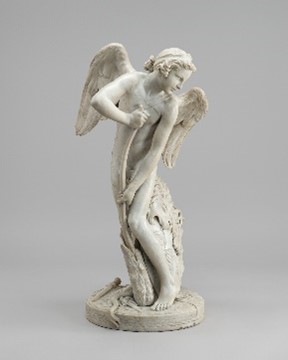
Sculpture is an art form in which the artist creates a three-dimensional piece by carving or casting materials. Sculptors typically use materials like stone, wood, metal, or plaster. Sculptures come in three main categories: high relief, bah relief (also known as low relief), and freestanding.
High-relief sculptures are carved into flat plants, such as walls, foundations, or doors, but are intricately detailed and appear three-dimensional.
Bah relief sculptures are flatter than high-relief sculptures and appear less three-dimensional. A common example of bas-relief sculpture is hieroglyphics and art carved into cave walls.
Freestanding sculptures are what people most commonly think of when they think of sculptures. Freestanding pieces are fully three-dimensional works that viewers can observe from any angle.
24. Clay
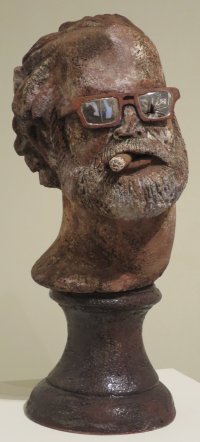
Clay is one of the oldest art mediums, with the oldest known sculpture dating back to 26,000 BC. Clay is a diverse art medium that includes many kinds of clay, such as earthenware, stoneware, ball, fire, and porcelain.
Of the different clay art mediums, ball clays and porcelain clays are most often used for sculpture, while other clays are more often used for functional purposes, such as bricks, cups, bowls, or plates.
Clay sculptures can range from brightly colored, fun, and whimsical, such as those made by Lorien Stern, to surrealist humor, such as those made by Robert Arneson.
25. Acrylic Resin
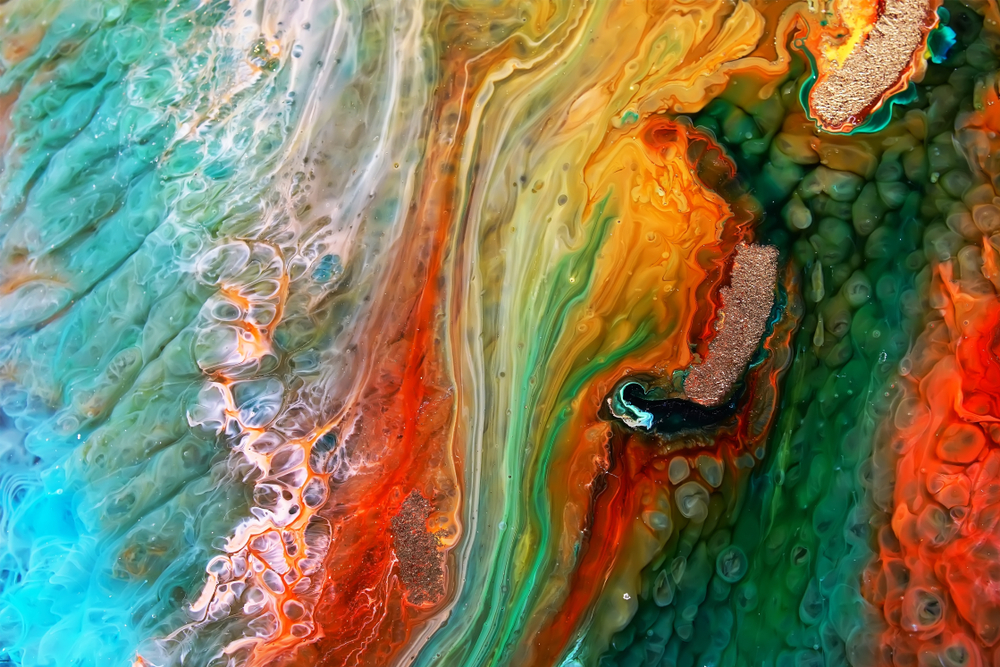
Acrylic resin is among the newest art mediums, especially for sculpture. It was invented in 1915 by Otto Röhm of Germany. Artists typically make acrylic resin sculptures by pouring a resin mixture into a mold.
If done well, acrylic resins can be made completely clear. Embedding flowers, gold, and other colors of acrylic into a clear resin has become a popular trend in modern art. Acrylic resin has been combined with wood, other plastics, paint, and many other materials to make unique mixed media pieces.
One notable artist who uses acrylic resins in sculpture is Dan Lam. She uses bright, vibrant acrylic to create unique sculptures that appear fluid with movement.
26. Metal Art
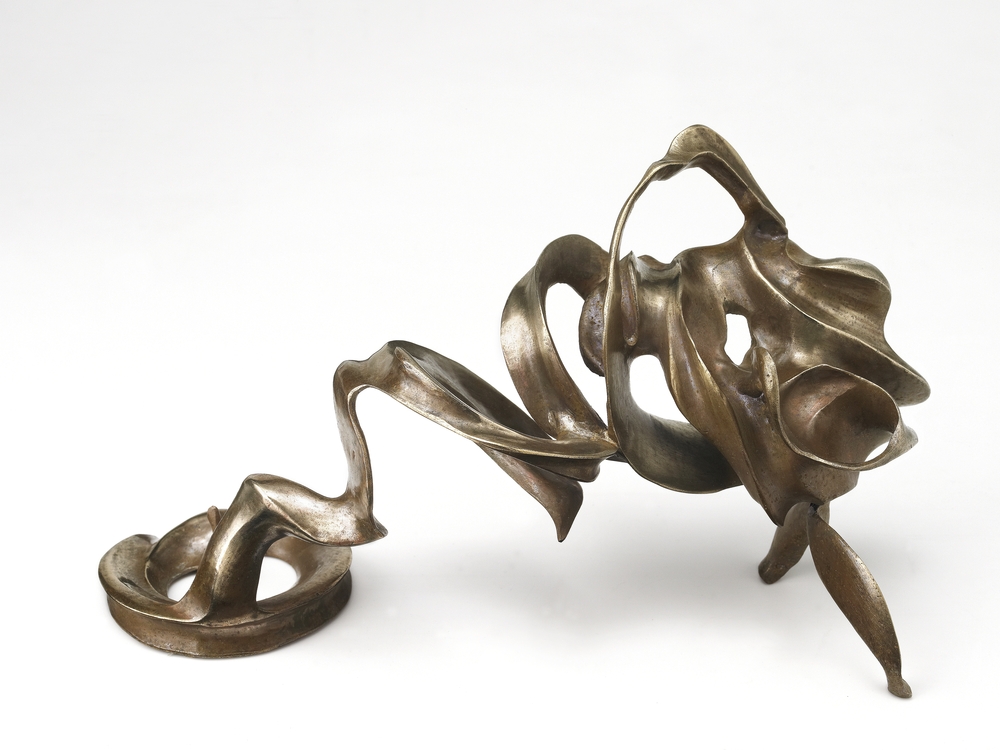
Artists can make metal sculptures in many ways, including molds or welding. While metal sculpting is often considered a modern art form, casting metals for artistic purposes dates back as far as 6,000 years.
Today, artists often use metal sculptures to create sturdy public art installations. “Cloud Gate” by Anish Kapoor (commonly known as “The Bean”) is a famous example of metal sculpture used to bring art into a public space.
Metal sculpture is closely related to architecture, though they are different. Usually, if a piece can be entered and used as a functional building, it is considered architecture, not sculpture. Nonetheless, some architects have begun to push these boundaries.
For example, the Tower of the Sun in Kazakhstan sacrifices some functionality for beauty and aesthetics, bringing it farther from architecture and closer to sculpture.
27. Glass
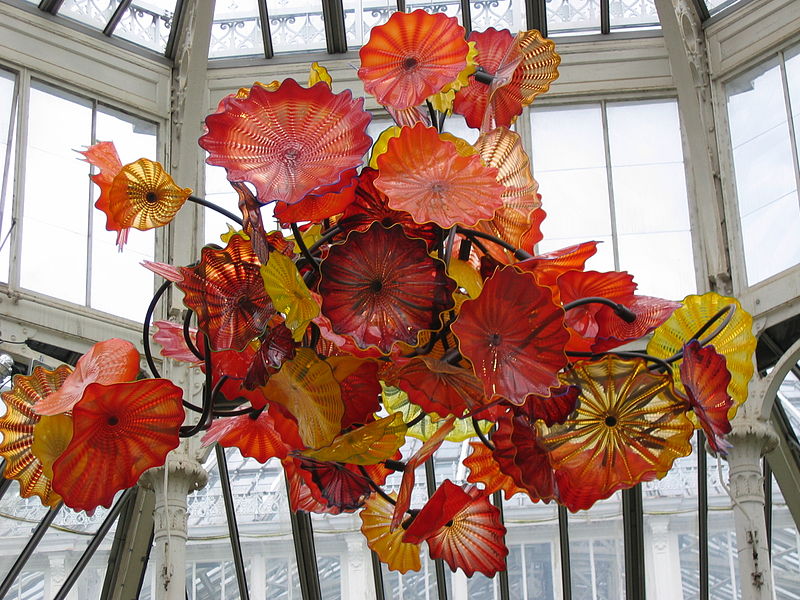
Glass is amongst the oldest art mediums. It was invented around 5000 BC in Syria, and makers used it almost immediately to make arrowheads, blades, and jewelry. However, glass blowing (and therefore sculpting) would not be invented for another 4,000 years.
Glass blowing is a technique that involves creating molten glass from sand and attaching it to a long blow tube. Next, the artist will blow into the tube, creating a hollow center around a glass balloon. This glass can be pulled with shears, cut, spun, cooled at different temperatures, or put through various techniques to create various appearances.
Glass blowing and sculpting have become incredibly popular in modern art. Dave Chihuly is one of the most prolific contemporary glass sculptors. Chihuly uses bright colors and abstract, organic shapes to create eye-catching displays currently exhibited across the United States.
28. Stone
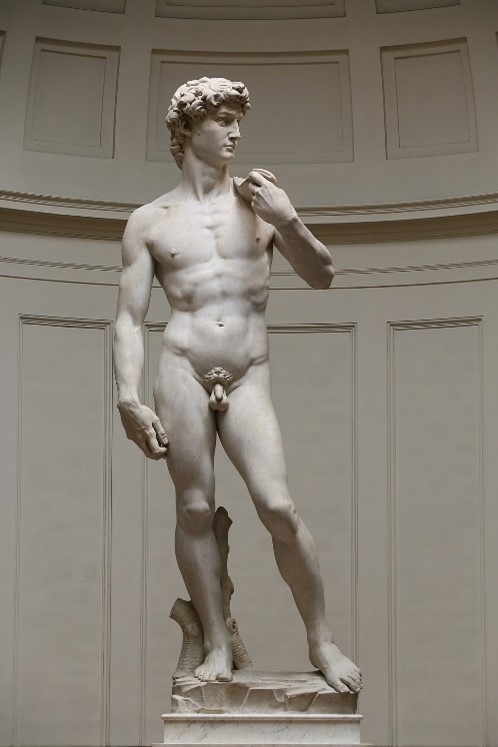
The oldest known statues in the world are made of stone. Stone was an easy tool for early humans due to its durability and accessibility. As a result, most early stone statues are carefully carved depictions of humans and animals.
The techniques and methods used in stone sculpting vary greatly depending on the material and artistic medium that the sculptor chooses. Many stone sculptors choose limestone or soapstone as its softness makes it easy to carve. Marble, as used in Michelango’s David, is much harder to carve, but the results are much more durable.
In modern times, stone sculpting is less standard than it was, but it is still present. Many contemporary stone sculptors have begun to use concrete in addition to stone to make the process easier and to make statues last longer. You can see this method in Cristo Redentor’s Christ the Redeemer, located in Rio.
29. Wood
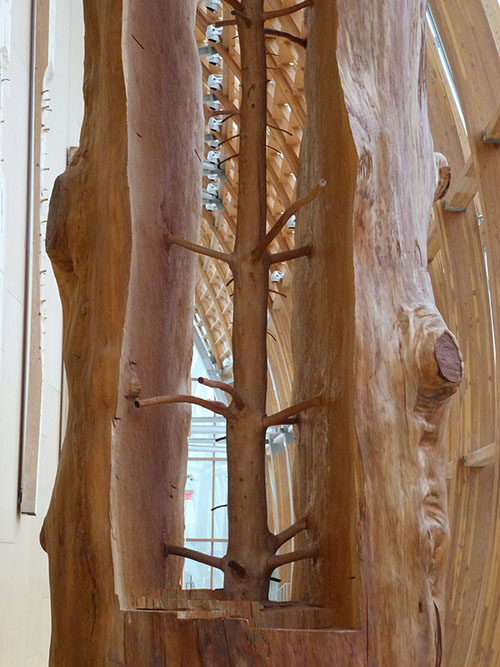
The creation of wood sculptures is done through wood carving, which is a form of woodworking. Woodworkers usually use a chisel and a knife to create wood carvings. Wood sculptures can be bah relief, high-relief, or three-dimensional.
Another way of performing wood art is via Pyrography, where artists will burn patterns into pieces of wood.
Woods from various trees have different properties that lend themselves to different wood carving projects. For example, most woodcarvers prefer pines for carving because of their softness, but they also use maple, oak, and walnut woods.
Wood carvings can look nothing like the trees they originally came from, as with Jean Arp’s Head and Shell, or they can incorporate the natural grains of the wood, such as Aron Demetz does in his work.
30. Photography
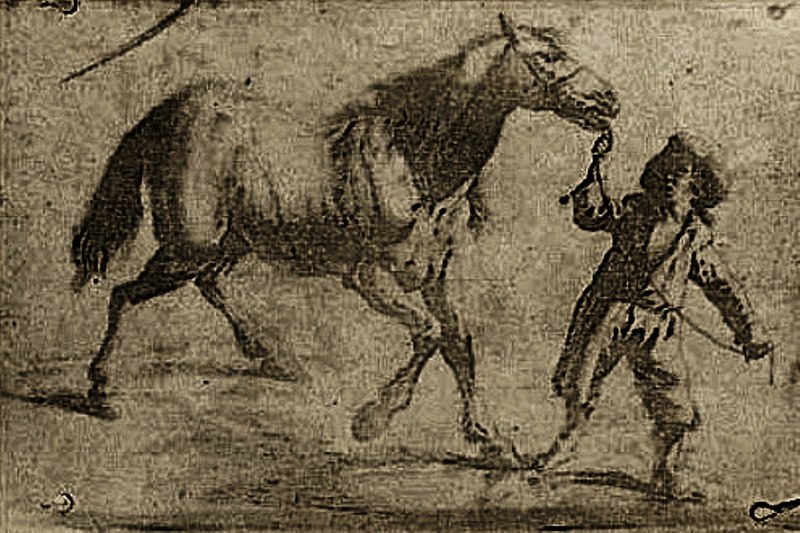
Photography as a medium is defined as the capture of light digitally or onto a medium. The first photograph was taken in 1826 by a French scientist named Joseph Nicéphore. He captured an image of the view out of the window in his home.
Since then, photography has come a long way. It is used as a tool by the press to capture essential moments, by people to capture their families and lives, and by activists to capture their movements.
Photography as a medium is divided by what the photograph captures and the style of the photo. Photos can be in black and white or color and can capture landscapes, portraits, events, or candid moments.
31. Black and White Photography
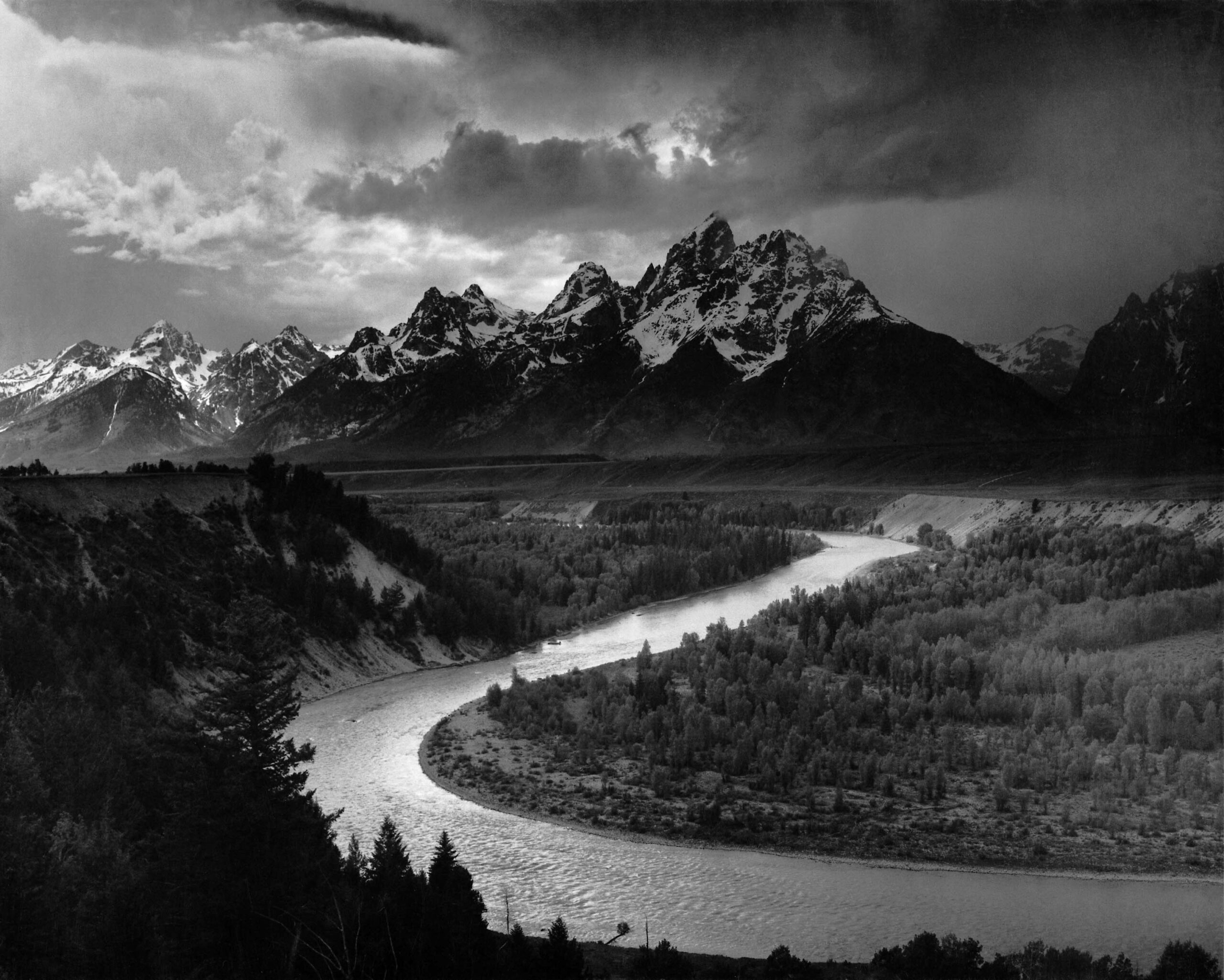
Originally, black-and-white photography was the only kind available. Today, more than one hundred years after the invention of color photography (in the 1890s), artists continue to use black-and-white photography as an intentional artistic choice.
Henri Cartier-Bresson is famous for using only black and white photography. In his mind, color was an embellishment and often poorly represented the natural dullness that lived in the world. The color in photographs was overly exaggerated and not representative of the world as he saw it.
Some artists prefer black and white for its ability to capture the depth of shadows and light. Others feel that it gives images a classic, vintage feeling. Whatever the reason, black-and-white photography will likely continue to stick around, despite color photography being more accessible than ever.
32. Landscape Photography
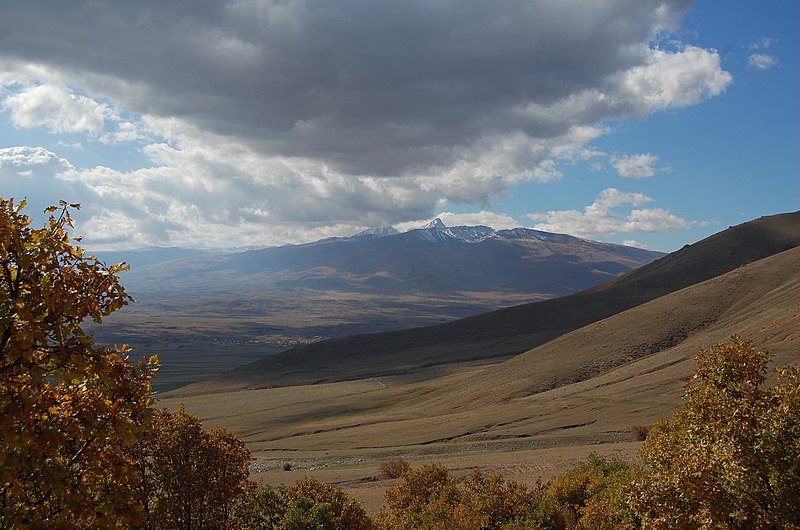
Landscape photography is exactly what it sounds like: the photography of nature and landscapes. Most landscape photography aims to bring the viewer into the photo and see the world the way the photographer sees it. In essence, most landscape photographers aim to share beauty.
Artists can do landscape photography in brilliant color that replicates exactly what they saw. David Noton is a great example of this approach to photography. Many of his pictures contain bright, saturated colors that bring the viewer into his photos.
Other landscape photographers, such as Ansel Adams, have captured the light and shadows of nature in black and white. Adams is famous for capturing the United State’s national parks and most iconic scenes in the sharp relief of black and white photography.
33. Portrait Photography
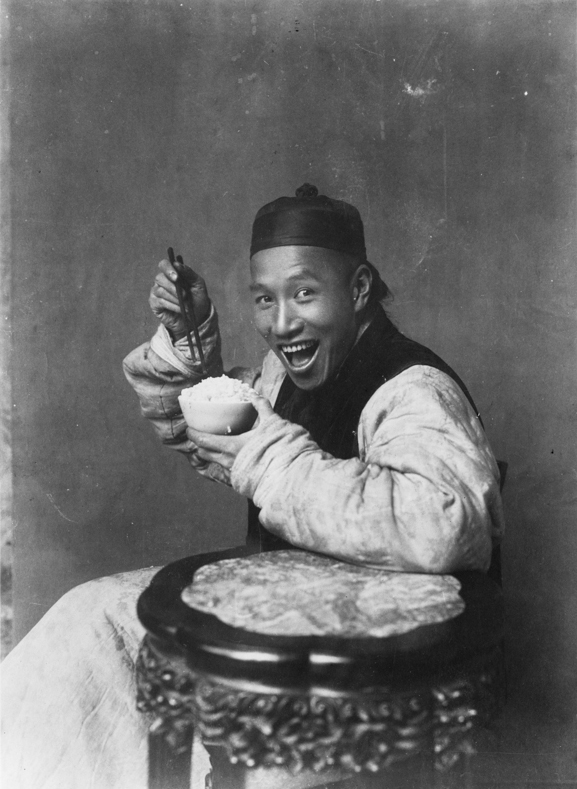
Portrait photography is an art form that focuses on capturing a person’s likeness in a photo. Only some portraits aim to be true to life, however. Some images aim to capture a feeling rather than create a replica of a person’s face.
Steve McCurry has aimed to do both of these things, depending on the portrait he is taking. Sometimes, he adds costumes and makeup and poses people in photographs. Other pictures feature intense eye contact in candid locations.
Final Thoughts
There are many different art mediums, all of which lend themselves to different forms of artistic expression. The medium an artist chooses to use has a massive impact on the message of the final piece. While there are many art mediums described here, this list is by no means exhaustive.
If you’re new to art, experiment with different art mediums and materials- you never know what you might find a passion for. Whether you find your style in paint mediums or digital art, learning to express yourself through art is the most powerful tool you’ll ever use.
